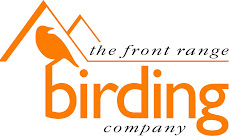Many people come to the store asking us what the best field guide is, and I really find that it varies from person to person. I personally love Sibley's while other may prefer Petersons. In this post I hope to give some good pro's and cons of each of the most popular field guides. I also tend to recommend different guides for different levels of knowledge. For instance those that come having never noticed a bird in their life but are interested in starting I will recommend a guide that has photos, but mention that as they get farther along they should come back and consider a Sibley's or Petersons. Photo guides are (sometimes) more simple than say Sibley's where there are 6 different drawings for one individual bird.
I'll start with the two that have hand drawn illustrations.
Sibley
Pros
I love the Sibley guide for a number of reasons but mainly its the amazing illustrations and the variation he captures in different individual birds. He draws multiple plates for each bird flight from above, flight from bellow and perched. He gives details on habitat, voice and behavior. He draws and point out difference between males and females as well and similarities between species. At the beginning of each section he has a page with all the female or juvenile birds of that section. This way you can glance at that page and narrow it down by comparing all the field marks to similar species and then jump directly to that species page. I have found this especially useful for the warblers and the Calidris sandpipers. The second edition of the Sibley guide came out less than a week ago and I have read very mixed reviews about it. Mostly that the drawings are printed too darkly, but it seems some like it and other don't. We'll see.
Cons
Range maps in the Sibley guide are terrible. I can hardly see them and where the cut off are. I don't recommend solely using the range maps in any guide. None are accurate enough as ranges tend to fluctuate. I prefer places like ebird to find more accurate range maps, but there is no range map that is 100% accurate.
Petersons
The Peterson guide was my first illustrate field guide and I used it for quite some time before I was gifted the Western Sibley. The illustrations in Peterson are very beautiful but sometimes lack the life-like aspect that Sibley gives us. I find some of the birds to be somewhat disproportioned and there are much fewer examples of each species. I was misled for years about the identification of the Empidonax flycatchers because of the extreme variation he draws between species, but he also draws them over their specific habitat which, when I discovered exactly how similar they do look, to be very useful, he also has simple little lines that visualize the calls of the flycatchers which I have also found very useful.
And now for photographic guides.
Stokes
Stokes was the first guide I ever bought and I loved it until both front and back covers had torn off. It has good photos and each page is consistent with is organization, photos at the top text at the bottom. Unlike the other guides which are a little more helter-skelter with drawings sorta spread about and grouped with similar species for comparison etc. The stokes is great for a beginner whose main focus is to identify the bird at hand and not compare it to its regional subspecies or strange variants that may exist elsewhere.
Crossley
I love the Crossley guide for its strange page layout. It has close ups of each bird at the front of the page in different positions and then as they go back they get smaller and they are positioned in a large variety of ways. All the photos are cut out and places very nicely over a natural photo background. It really helps give a good comparison of all angles and variations. Its sort of surreal looking at a photograph with 20+ Brown Pelicans all in some strange position. I find this book especially useful for identifying gulls because it has so many photos of each one. Especially in tandem with sibley.
The downsides on this one is its size. Its is very large and doesn't make a very good field guide. I use it mainly has a reference book when I return from a trip.
Also only and eastern guide is available!
Kaufman
To be honest I've never really used Kaufmans because I've always been very turned off to it by its strange Peterson-like placement of photos on the right page and text on the right. This has always been annoying to me because it is sometimes difficult to correspond the right bird to the correct text when there are say 8 birds on one page and a solid page of text on the other.
That being said each bird is well represented in terms of information and photographs. Important field marks are pointed out and the photos are clear, focused and generally well lit. This isn't a bad book in any sense and I would trust it and use it in the field.
I think all these books are useful to have on a bookshelf and I strongly believe that they can all be used in tandem to help expand ones knowledge of habitat, behavior, and field and identification.
And if not it is an excuse to buy another book!
*Disclaimer-these are all my personal views and thoughts. You are all welcome to your own.
Hungry momma bear & her cub
1 year ago





